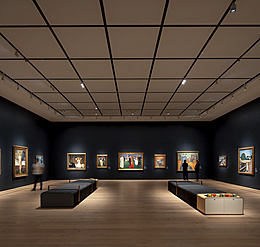
Ambient luminescence, focal glow and play of brilliants shown with example images.
Ambient luminescence, focal glow and play of brilliants are the three basic types of lighting in perception-oriented lighting design as developed by the American lighting designer Richard Kelly. This "grammar of light" not only forms an important basis for qualitative lighting design, but also for the development of luminaires.










